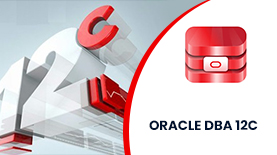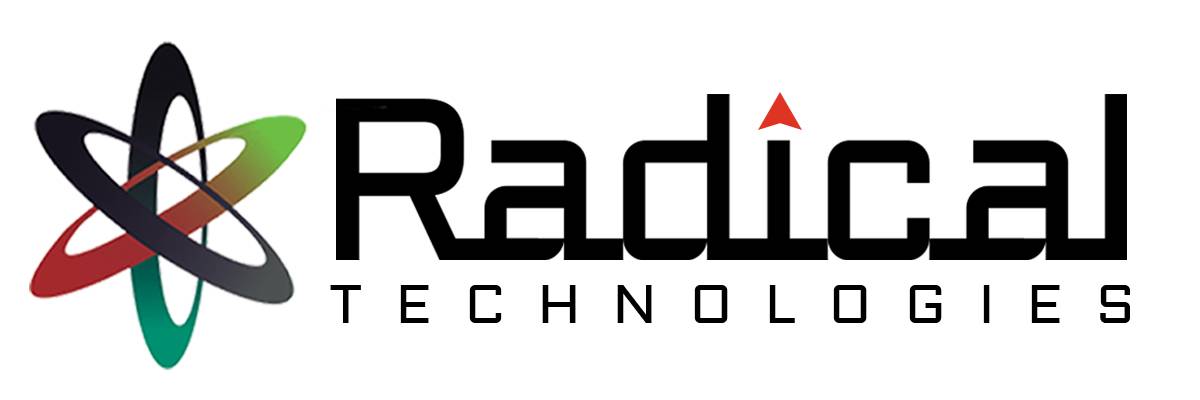- Home
- About Us
- Courses
- Combo Courses
- Programming Combo Courses
- Non Programming Combo Courses
- Linux & Cloud Combo
- Linux & DBA Combo
- AWS & Devops Combo
- Salesforce Combo
- Azure Admin Combo
- Azure Cloud & Azure Devops Combo
- Tableau Informatica Combo
- Power BI Informatica Combo
- Power BI & MSBI Combo
- Salesforce Manual Testing Combo
- Salesforce Tableau Combo
- Data Analytics Combo
- MCSA Azure Combo
- Powerplatform Combo
- ADF & Power BI Combo
- BA & Tableau Combo
- PG Diploma
- Batch Schedule
- Job Openings
- Certifications
- Gallery
- Contact Us
ORACLE DBA 12C

Satisfied Learners
Duration of Training: 4 weekends ( 32 Hours )
Why Radical Technologies
Enterprise Manager and Other Tools
- Enterprise Manager (EM) Cloud Control home page
- Enterprise Manager Express home page versus Enterprise Manager Database Control
- SQL Developer with new functionalities
- OUI, DBCA
Basics of Multitenant Container Database (CDB)
- Benefits of the multitenant architecture
- Differences between the root container and pluggable database containers
- Structure of the root
- Structure of Pluggable Database (PDB)
- CDB_xxx and DBA_xxx views
- Impacts in Security, Data Guard, Oracle GoldenGate, Oracle Streams, XStream, and Scheduler
Configuring and Creating CDB and PDBs
- Tools: DBCA and SQL*Plus
- Configuration and creation of CDB
- Exploring the Structure (CDB_xxx views and EM)
- Tools used: SQL Developer, DBCA and SQL*Plus and EM Database Express
- Create a new PDB from PDB$SEED
- Create a PDB from a non-CDB
- Clone a PDB into the same CDB or into another CDB using DB links
- Plug in an unplugged PDB
Managing CDB and PDBs
- Connect to CDB as administrator
- Connect to a PDB using a service name
- Start up a CDB
- Open / Close a PDB (SQL*Plus, srvctl, EM)
- Open / Close all PDBs
- Shut down a CDB
- Preserve or discard the PDBs open mode when the CDB restarts
- Change PDB state
Managing Tablespaces, Common and Local Users, Privileges and Roles
- Create permanent tablespaces in the root and PDBs
- Manage common and local schemas and users in the root and PDBs
- Manage system and object privileges to common and local grantees granted “commonly” or “locally”
- Manage common and local roles granted “commonly” or “locally”
Managing Backup / Recovery / Flashback
- Backup a whole CDB
- Backup a PDB
- Recover CDB from redo log files, control files, undo datafiles loss
- Recover PDB from PDB datafiles loss
- Flashback at CDB level
- Explain the two methods of migration
Online Datafile Move and Automatic Data Optimization
- Data classification in 12c : tablespace, group, object, row levels
- Configure heat map
- Automatic movement and compression
- Compression levels and types
- Policy declaration: simple declarative SQL extension
- Customized automated action execution with user-defined function
- Execution in scheduled maintenance windows and by MMON
- Customized schedule with DBMS_ILM package
In-Database Archiving
- Challenges of old data in tables and 11g solutions
- In-database archiving new solutions
- Use ROW ARCHIVAL clause to enable row lifecycle state for applications
- Set ROW ARCHIVAL VISIBILITY for session level visibility control
- Use predicate on ORA_ARCHIVE_STATE column
- Temporal Validity versus Temporal History (Transaction Time of FDA)
- New clause of CREATE / ALTER TABLE to set a Temporal Validity: PERIOD FOR
- New SQL temporal data type
Auditing Enhancements
- Review of 11g R2 audit trail implementation
- Overview of the Unified Audit Trail
- Enabling the Unified Audit Trail
- Creating a separate tablespace for the unified audit trail
- Granting the AUDIT_ADMIN role to a user for audit trail configuration and management
- Configuring the Unified Audit Trail to set a tolerance level for loss of audit records
- Creating audit policies
Privileges Enhancements
- Implementing Separation of Duty for Database Administration Tasks
- Using Database Privilege Analysis
- Overview of Database Privilege Analysis
- Granting the CAPTURE_ADMIN role to enable management of privilege captures
- Creating and starting/stopping privilege captures
- Viewing privilege profile data
- Querying DBA_PRIV_CAPTURES
- Explaining the purpose of the default ORA$DEPENDENCY profile
Oracle Data Redaction
- Overview of Oracle Data Redaction
- Types of Masking Policies
- Administering the EXEMPT REDACTION POLICY system privilege to enable a user to view unmasked values
- Managing Masking Policies
- Best practices for defining policy expressions
- Understanding Masking of Statements Containing Subqueries
- Viewing Information About Masking Policies by Querying REDACTION_POLICIES and REDACTION_COLUMNS
General RMAN New Features and FDA Enhancements
- Making Database Connections With RMAN
- Using the SYSBACKUP Privilege
- Using SQL, DESCRIBE Command, Duplication Operation with the NOOPEN option
- Backing up and Restoring Very Large Files
- Creating Multisection Backups
- Transporting Data Across Platforms
- Prerequisites and Limitations
- Transporting Data: Processing steps
Monitoring DB Operations
- Overview
- Use cases
- Current Tools
- Define a DB operation
- Monitoring: Bracketing an Operation
- Monitoring the Progress of Operations
- DB Operation Tuning
- DB Operation Active Report
Real-Time ADDM and Compare Period Advisor
- Emergency Monitoring
- Real time ADDM
- Use cases
- Goals
- Define Workload dimensions
- Reported items
- Root Causes
- Requirements for a report
ADR and Network Enhancements
- ADR file types
- New File types
- New File locations
- New command for ADRCI
- Improve performance by Compression
- Setup Compression
In-Memory Column Store
- In-Memory Database option goals and benefits
- Row format and columnar format
- New SGA component:
- IMCU synchronization
- Deployment and behaviors
- Compression ratio
- New dictionary tables and added columns
- New statistics: IM %
In-Memory Caching
- Setting up Full Database In-Memory Caching
- Using Full Database In-Memory Caching
- Explaining the two buffer replacement algorithms of Automatic Big Table Caching
- Configuring Automatic Big Table Caching with PARALLEL_DEGREE_POLICY and DB_BIG_TABLE_CACHE_PERCENT_TARGET initialization parameters
- Using Automatic Big Table Caching
SQL Tuning
- Adaptive Execution Plans
- SQL Plan Directives
- Statistics Gathering Performance Improvements
- Histogram Enhancements
- Enhancements to Extended Statistics
- Adaptive SQL Plan Management
Resource Manager and Other Performance Enhancements
- Manage resources between PDBs
- Manage resources within a PDB
- Manage resources with CDB and PDBs plans
- Manage runaway queries
- Control the in-memory database repopulation resource consumption
- Automated maintenance tasks
- Current Architecture: Unix multiprocess / one thread, NT/Windows one process / multithread
- New Architecture: Multiprocess / MultiThread
Index and Table Enhancements
- Multiple indexes on the same set of columns as long as some characteristic is different
- Create table with INVISIBLE columns
- Support for invisible columns
- Describe online redefinition supports
- Explain LOCK timeout during FINISH_REDEF_TABLE
- Describe the Advanced Row Compression
- Using the following DDL statements in an online manner
Learn Oracle dba 12C – Course in Pune with Training, Certification & Guaranteed Job Placement Assistance!
Online Batches Available for the Areas
Ambegaon Budruk | Aundh | Baner | Bavdhan Khurd | Bavdhan Budruk | Balewadi | Shivajinagar | Bibvewadi | Bhugaon | Bhukum | Dhankawadi | Dhanori | Dhayari | Erandwane | Fursungi | Ghorpadi | Hadapsar | Hingne Khurd | Karve Nagar | Kalas | Katraj | Khadki | Kharadi | Kondhwa | Koregaon Park | Kothrud | Lohagaon | Manjri | Markal | Mohammed Wadi | Mundhwa | Nanded | Parvati (Parvati Hill) | Panmala | Pashan | Pirangut | Shivane | Sus | Undri | Vishrantwadi | Vitthalwadi | Vadgaon Khurd | Vadgaon Budruk | Vadgaon Sheri | Wagholi | Wanwadi | Warje | Yerwada | Akurdi | Bhosari | Chakan | Charholi Budruk | Chikhli | Chimbali | Chinchwad | Dapodi | Dehu Road | Dighi | Dudulgaon | Hinjawadi | Kalewadi | Kasarwadi | Maan | Moshi | Phugewadi | Pimple Gurav | Pimple Nilakh | Pimple Saudagar | Pimpri | Ravet | Rahatani | Sangvi | Talawade | Tathawade | Thergaon | Wakad


